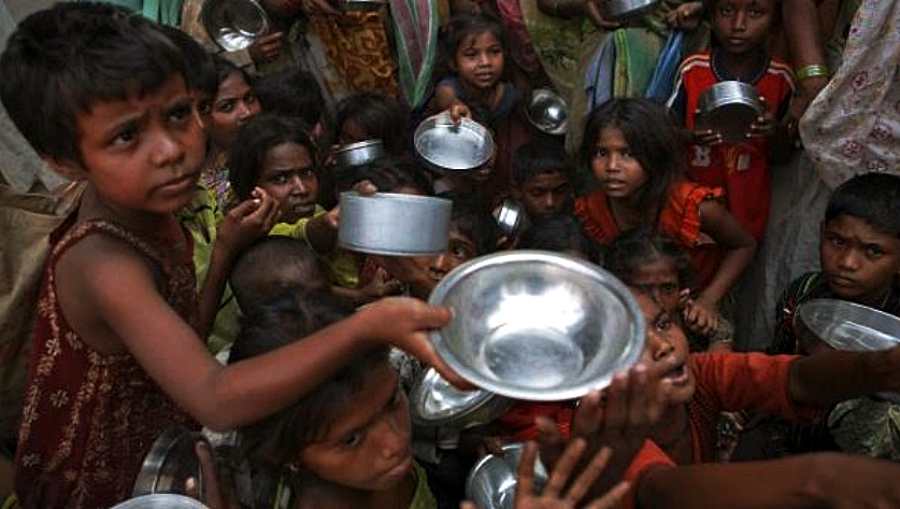Sat 06 May 2023:
In 2022, more than a quarter of a billion people in 58 food-crisis countries/territories were acutely food insecure and required immediate food assistance, according to the Global Report on Food Crises released on Wednesday.
The report’s findings indicate that accomplishing the objective of eradicating hunger by 2030 is growing increasingly difficult, as the population experiencing acute food insecurity climbed for the fourth consecutive year – the largest number in the report’s seven-year history.
Last year, about 258 million people were in “crisis or worse acute food insecurity,” up from 193 million in 53 countries and territories in 2021.
The countries/territories with the highest numbers of people in this state in 2022 were the Democratic Republic of Congo, Ethiopia, Afghanistan, Nigeria, Yemen, Myanmar, Syria, Sudan, Ukraine, and Pakistan.
More than 40% of the population facing this insecurity lived in just five countries/territories – the Congo, Ethiopia, Afghanistan, Nigeria, and Yemen.
People in seven countries faced starvation and destitution, or catastrophe levels of acute hunger, at some point during 2022. More than half of the 376,400 people at this catastrophe level were in Somalia (214,100), but these extreme conditions also affected populations in South Sudan (87,000), Yemen (31,000), Afghanistan (20,300), Haiti (19,200), Nigeria (3,000), and Burkina Faso (1,800), the report said.
Around 35 million people were in emergency states in 39 countries/territories, it said, with more than half of those living in just four countries: Afghanistan, Congo, Sudan, and Yemen.
Furthermore, over 35 million children under age 5 suffered from wasting or acute malnutrition in 30 of the 42 main food crisis contexts examined in the report, with 9.2 million of them suffering from severe wasting, the most life-threatening form of undernutrition and a major contributor to increased child mortality.
Primary drivers
The report underlined that the primary drivers of acute food insecurity in countries/territories with food crises are conflict/insecurity, affecting 19 countries/territories with 117.1 million people.
It is followed by economic shocks in 27 countries with 83.9 million people, including the socioeconomic impact of COVID-19 and the repercussions of the war in Ukraine.
Weather extremes – such as sustained drought in the Horn of Africa, devastating flooding in Pakistan, and tropical storms, cyclones, and drought in Southern Africa – were the third key driver in 12 countries with 56.8 million people.
Regarding the number of forcibly displaced people in food-crisis countries/territories, the report said that a total of 72.8 million people were displaced in 2022.
While 53.2 million of them were internally displaced persons, 19.7 million of them were refugees and asylum-seekers.
Projections for 2023
According to estimates available as of March for 38 of the 58 countries/territories, up to 153.4 million individuals are expected to be in the “crisis or worse acute food insecurity” level or worse in 2023.
However, the report said that a number of shocks that occurred in early 2023 and were not factored into the available estimates are likely to exacerbate the acute food insecurity situation in these food-crisis countries/territories.
Tropical cyclone Freddy in Madagascar, Malawi, and Mozambique, earthquakes in Syria and Türkiye, and the rising violence in Sudan are among them.
Around 310,000 people are expected to be in the food catastrophe category across Burkina Faso, Haiti, Mali, Nigeria, Somalia, and South Sudan, with Somalia accounting for nearly three-quarters of them.
Economic shocks are projected to be the primary cause of acute food insecurity in 22 of these countries/territories, as national economic resilience has been badly harmed by the poor recovery from the COVID-19 epidemic, aggravated by the Ukraine war.
In 10 of the countries/territories, including Ukraine, conflict/insecurity is expected to be the primary factor.
El Nino is expected to return in June 2023, resulting in dry weather conditions in critical cropping areas of Central America, Southern Africa, and Far East Asia, as well as excessive rainfall and probable flooding in Near East Asia and East Africa, according to the report.
“This crisis demands fundamental, systemic change. This report makes clear that progress is possible. We have the data and know-how to build a more resilient, inclusive, sustainable world where hunger has no home – including through stronger food systems, and massive investments in food security and improved nutrition for all people, no matter where they live,” UN Secretary-General Antonio Guterres wrote in the foreword of the report.
______________________________________________________________
FOLLOW INDEPENDENT PRESS:
TWITTER (CLICK HERE)
https://twitter.com/IpIndependent
FACEBOOK (CLICK HERE)
https://web.facebook.com/ipindependent
Think your friends would be interested? Share this story!





